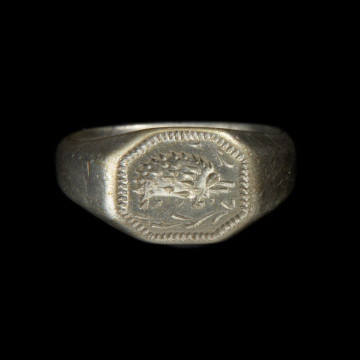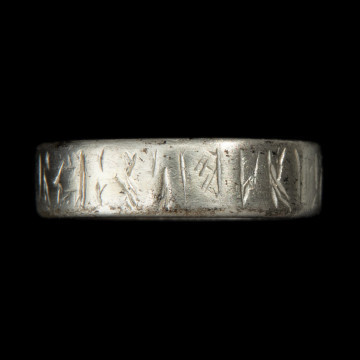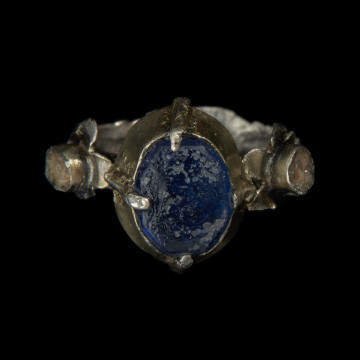
Signet ring with hedgehog
przełom XIV i XV wieku
National Museum in Szczecin
Part of the collection: Jewels and costumes of Pomeranian dukes
Jewellery was an indispensable element of Renaissance costumes. Various types of chains and pendants, but strings of pearls, necklaces, belts and bracelets were also the decoration of clothes, testifying to the wealth and social position of the wearer. Representative costumes were also decorated with jewels sewn onto the fabric. Such small jewellery ornaments, usually found in more significant numbers, were called trinkets or dress jewels. They often decorated women's dresses, but they were also used to decorate men's doublets, coats and headgear. The composition of openwork rosettes, found in the crypt of Szczecin Castle, consists of a centrally placed gold button, around which four smaller buttons surrounded by a spiral wire were placed, as well as petals decorated with dark blue enamel and volutes filled with black and white enamel, fastened with gold bands. The enamelled pieces are inlaid with regularly spaced gold dots (some are missing). The preserved jewels belong to a type of openwork ornaments shaped from gold sheet, decorated with cellular enamel inlaid with gold, and with filigree, granulation and sometimes pearls, popular in Central and Northern Europe in the late 16th and early 17th centuries.
Monika Frankowska-Makała
Other names
dress jewellery
Author / creator
Dimensions
cały obiekt: height: 0,8 cm, width: 3 cm
Object type
jewellery
Creation time / dating
Creation / finding place
Identification number
Location / status

przełom XIV i XV wieku
National Museum in Szczecin

przełom XIV i XV wieku
National Museum in Szczecin

National Museum in Szczecin
DISCOVER this TOPIC
National Museum in Lublin
DISCOVER this PATH
Educational path